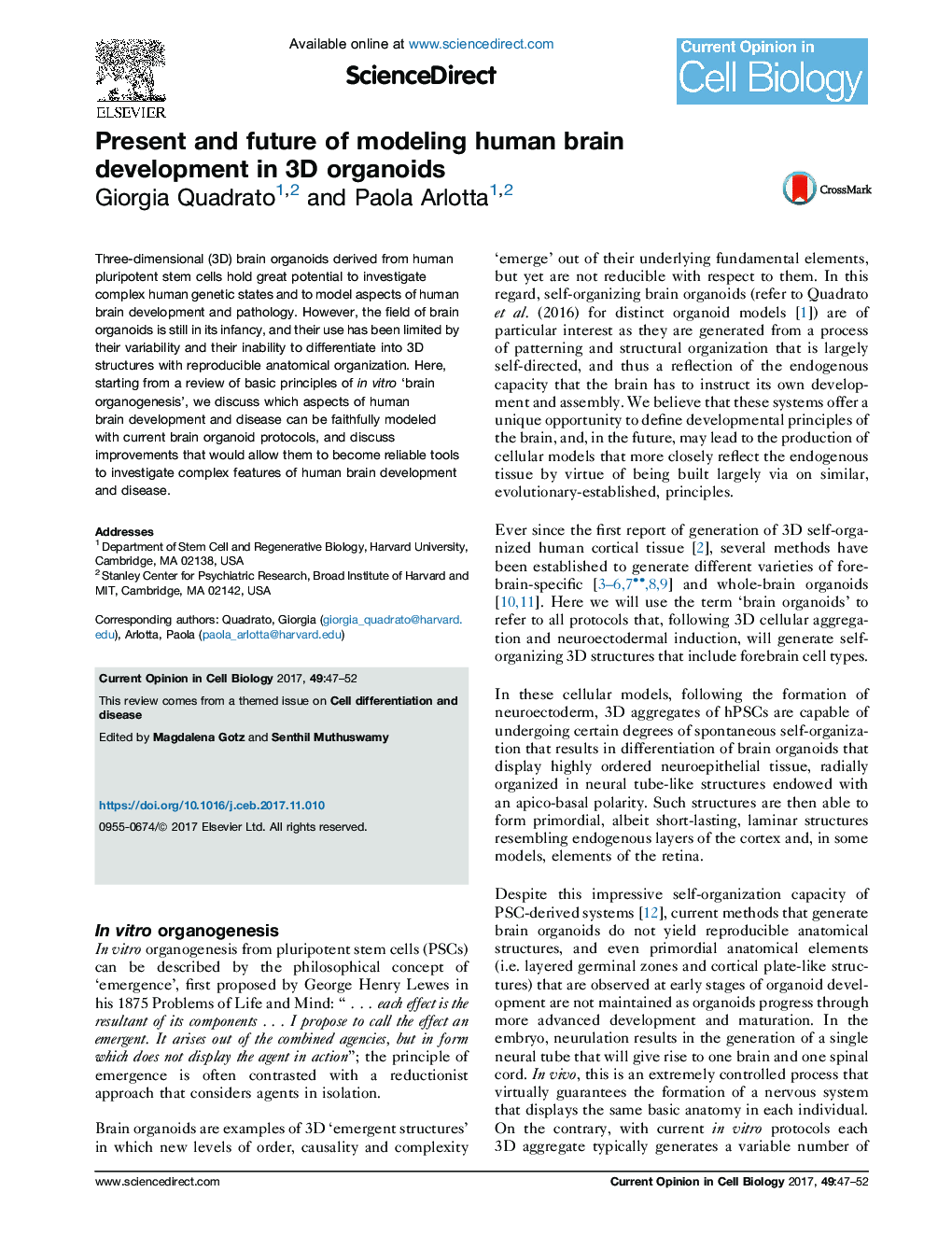| Article ID | Journal | Published Year | Pages | File Type |
|---|---|---|---|---|
| 8464982 | Current Opinion in Cell Biology | 2017 | 6 Pages |
Abstract
Three-dimensional (3D) brain organoids derived from human pluripotent stem cells hold great potential to investigate complex human genetic states and to model aspects of human brain development and pathology. However, the field of brain organoids is still in its infancy, and their use has been limited by their variability and their inability to differentiate into 3D structures with reproducible anatomical organization. Here, starting from a review of basic principles of in vitro 'brain organogenesis', we discuss which aspects of human brain development and disease can be faithfully modeled with current brain organoid protocols, and discuss improvements that would allow them to become reliable tools to investigate complex features of human brain development and disease.
Related Topics
Life Sciences
Biochemistry, Genetics and Molecular Biology
Cell Biology
Authors
Giorgia Quadrato, Paola Arlotta,
